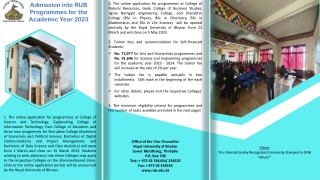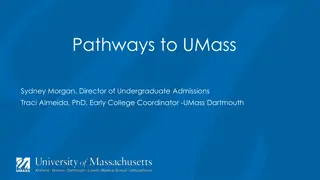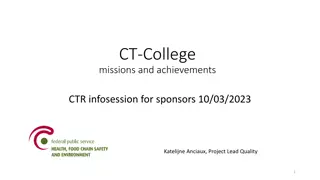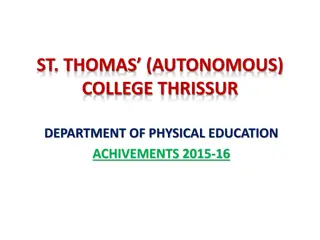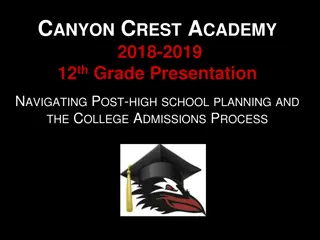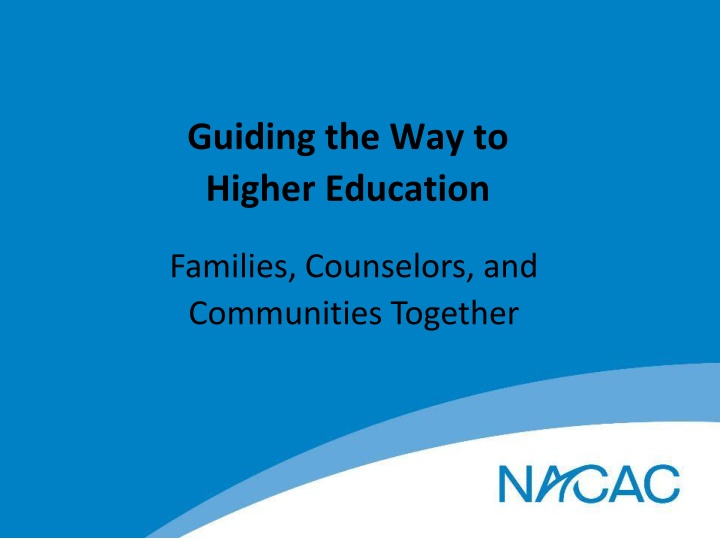
Financial Aid for Higher Education Expenses
Discover essential information on college costs, types of financial aid, assessing student need, and the financial aid process. Learn about grants, scholarships, loans, and work-study opportunities. Find out how to calculate total costs and expected family contributions.
Download Presentation

Please find below an Image/Link to download the presentation.
The content on the website is provided AS IS for your information and personal use only. It may not be sold, licensed, or shared on other websites without obtaining consent from the author. If you encounter any issues during the download, it is possible that the publisher has removed the file from their server.
You are allowed to download the files provided on this website for personal or commercial use, subject to the condition that they are used lawfully. All files are the property of their respective owners.
The content on the website is provided AS IS for your information and personal use only. It may not be sold, licensed, or shared on other websites without obtaining consent from the author.
E N D
Presentation Transcript
Guiding the Way to Higher Education Families, Counselors, and Communities Together
ESSENTIAL V Paying for College
Questions 1. Do you know how much college costs, and what is included in the total cost? 2. What is the difference between grants, scholarships, loans, and work study? 3. How does a student receive financial aid?
More than half the students attending college in the United States receive some form of financial assistance.
How Much Will it Cost? Indirect Costs Books and Supplies Room and Board (if student lives off campus) Personal Expenses Travel Billable Costs Tuition and Fees Room and Board (if student lives on campus) These costs show up on the college bill. These costs do not show up on the college bill.
Assessing Student Need Cost of Education (the total cost of attending college) Expected Family Contribution (minus the parents and student s financial resources) = Financial Need
Assessing Student Need Expected Family Contribution (EFC) is influenced by these factors: The amount the student s parents should or will be asked to pay from income and assets The amount the student can contribute from earnings and savings Any gift amount that the student receives Family size, age of oldest parent, number of children currently attending college
The Financial Aid Process FAFSA (Free Application for Federal Student Aid) www.fafsa.ed.gov CSS Profile profileonline.collegeboard.com Institutional aid applications Be sure to check each individual school s website to find out what forms must be filed and when they must be filed.
Types of Financial Aid Loans Grants Work-Study Scholarships
Grants Federal Pell Grants Federal Supplemental Education Opportunity Grants (FSEOG) State grants Institutional grants
Scholarships May be for academic, athletic, leadership, music, theater, etc. Usually competitive Institutional National State and Local including civic organizations
Work-Study Based on need Student is provided a job at an on-campus location such as bookstore or library 10-15 hours per week Generally above minimum wage
Types of Financial Aid Loans Stafford Perkins PLUS (Parent Loan for Undergraduate Students) Private Loans
The earlier parents or guardians become aware of the costs associated with college, the better the family can incorporate educational costs into their savings plan.

